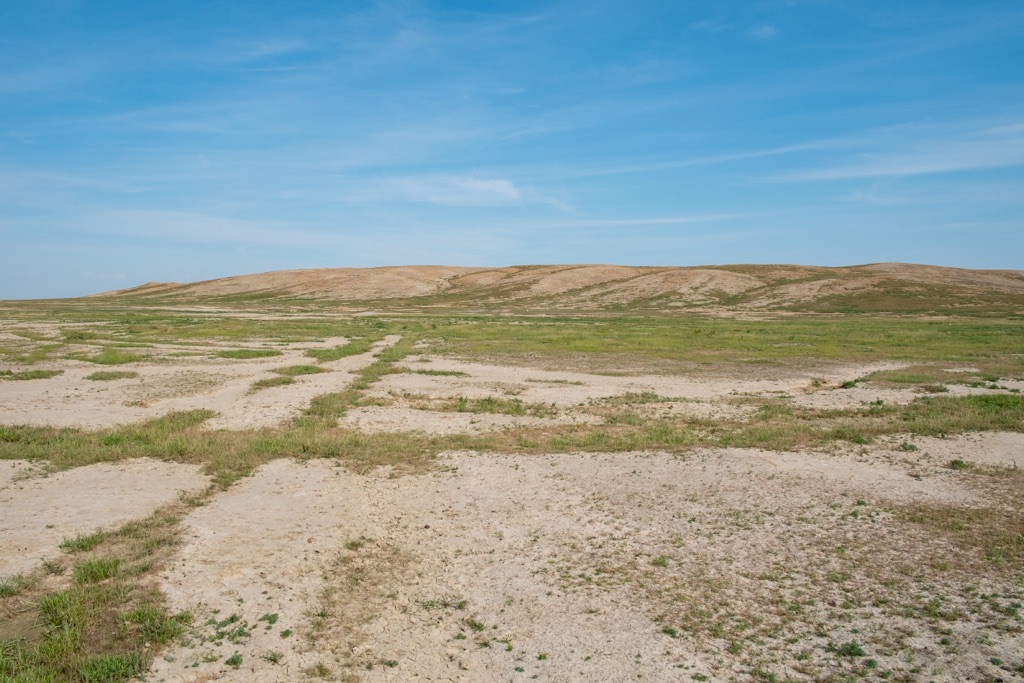Altyn-Depe is an ancient site located in what is now Turkmenistan. It was one of the major cities of the Bronze Age, thriving around 2200-1700 BC. The site is significant for its well-preserved urban structure, which includes residential and public areas, as well as a complex system of fortifications. Altyn-Depe was a key player in the development of urban civilization in the region, and its remains provide valuable insights into the life, culture, and economy of the Bronze Age in Central Asia.
Get your dose of History via Email
Historical Background of Altyn-Depe
Archaeologists discovered Altyn-Depe in the 20th century, with excavations starting in earnest in the 1950s. Soviet archaeologist Boris Kuftin led the initial exploration. The site revealed a continuous occupation from the 5th millennium BC to the end of the 2nd millennium BC. The people who built Altyn-Depe were part of the Bactria-Margiana Archaeological Complex, known for their advanced urban planning and use of bronze tools and weapons.
Over time, Altyn-Depe grew into a significant urban center. It featured a citadel, residential quarters, and specialized production areas. The city’s inhabitants engaged in agriculture, metallurgy, and trade with distant regions. The decline of Altyn-Depe around 1700 BC remains a subject of debate, with theories ranging from ecological changes to invasions.
After its decline, the site lay abandoned for centuries. It wasn’t until the late 3rd millennium BC that people re-inhabited the area. However, these later inhabitants did not reach the same level of urban complexity as the original settlers. Altyn-Depe’s ruins thus capture a snapshot of a once-flourishing Bronze Age civilization.
Historically, Altyn-Depe has not been the scene of any known major events after its decline. Its significance lies in its contribution to our understanding of early urban societies. The site’s well-preserved state allows archaeologists to study the social and economic structures of the time.
The discovery and subsequent studies of Altyn-Depe have filled in gaps in the history of Central Asia. They have provided a clearer picture of the region’s prehistoric period. The site remains an important focus for researchers interested in the rise and fall of early cities.
About Altyn-Depe
Altyn-Depe was a fortified city with a complex layout. The central citadel, surrounded by walls, was likely the administrative and religious hub. Residential areas spread out from this center, showing a clear urban plan. The city’s architecture included multi-roomed mud-brick houses, indicative of a settled and organized society.
The construction techniques at Altyn-Depe were advanced for their time. Builders used mud bricks for both domestic and public structures. The city’s fortifications, with walls and gates, were an impressive feat of engineering. They suggest a need for defense and a level of social organization capable of such construction projects.
Archaeological finds at Altyn-Depe include a variety of artifacts. These range from pottery and tools to intricate seals and beads. The presence of such items indicates a society with specialized crafts and trade networks. The quality of the artifacts also suggests a degree of wealth and cultural sophistication.
One of the architectural highlights of Altyn-Depe is the presence of what appears to be an early form of a ziggurat. This structure implies that the society had developed a complex religious life. It also points to possible cultural exchanges with contemporary civilizations in Mesopotamia.
The site’s extensive irrigation system highlights the inhabitants’ agricultural prowess. Canals and water management systems allowed for the cultivation of crops in the arid environment. This system was crucial for sustaining the city’s population and economy.
Theories and Interpretations
Several theories exist about the use and significance of Altyn-Depe. Some scholars believe it was a religious center, as evidenced by the ziggurat-like structure. Others argue that its strategic location made it a key trade hub in the region.
The mysteries of Altyn-Depe include the reasons behind its sudden decline. Some attribute it to a natural disaster, while others suggest a breakdown in trade networks or internal social strife. The exact cause remains uncertain, adding to the site’s enigmatic nature.
Interpretations of artifacts and structures at Altyn-Depe often rely on comparisons with other contemporary sites. Historians and archaeologists match findings to historical records from the region. This helps to build a broader understanding of the Bronze Age in Central Asia.
Dating of the site has been carried out using various methods, including stratigraphy and radiocarbon dating. These techniques have helped establish a timeline for the occupation and development of Altyn-Depe. They have also aided in correlating its history with that of neighboring regions.
The ongoing research at Altyn-Depe continues to refine our understanding of the site. As new discoveries emerge, theories and interpretations evolve. This dynamic process ensures that Altyn-Depe remains a subject of fascination and scholarly debate.
At a glance
Country: Turkmenistan
Civilization: Bactria-Margiana Archaeological Complex
Age: Circa 2200-1700 BC

